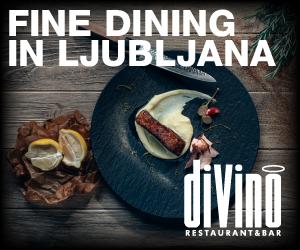Tourist in a Suit
7
The summer holidays are over and the meetings industry in Slovenia is about to kick into full swing. From 10 until 13 September Cankarjev dom in Ljubljana will welcome 1,600 nurses and doctors for the fortieth international conference of the European Dialysis and Transplant Nurses' Association and European Renal Care Association. It will be the biggest professional meeting in Slovenia this year. Soon after the picturesque Alpine village of Bovec will play host to the twentieth International Conference on Nuclear Energy for New Europe 2011.
The packed schedule gives workers in the meetings industry a continuing reason to smile. Congress manager Tatjana Radović of the Ljubljana Convention Bureau has seen the number of enquiries by foreign clients grow since the second half of last year.
"The majority of those in the meetings industry would agree that the current year definitely shows a positive trend compared to 2010, measured both by the number of confirmed events and new enquiries," Radović says, "If seen through the statistics of international association meetings, Ljubljana has more registered events right now for 2011 than for all of 2010.''
Radović is convinced that the growth will continue in the coming years. But Miha Kovačič, the director of the Slovenian Convention Bureau, is taking a more cautious stance given recent economic developments. "We are seeing minor improvements in the number of meetings and events in comparison to 2010, but the world, European and Slovenian economies are facing difficult times and this also has a negative effect on meetings and events," Kovačič warns.
Novelty factor
Each year, the International Congress and Convention Association (ICCA) draws up a yearly world ranking of meetings. In 2010 Slovenia came in 44th place with 44 registered meetings - a huge jump over 1999 when only 25 meetings were counted. Regionally, Serbia placed 43rd last year with 46 meetings and Croatia held 40th place with 50 meetings.
According to Kovačič, "looking European-wide, Slovenia is still quite an unknown destination". This brings benefits: "This novelty factor is a plus as clients are always looking for a new destination. [In addition] we are quite an experienced country which gives more confidence to the client. We are proud that each potential and existing client is very much surprised of the positive experiences generated while staying in Slovenia.''
Keeping up with competition
Radović and Kovačič both say the business tourists visiting meetings in Slovenia are generally from European countries but there are no hard statistics at present. "As there are no nationwide statistics we don't have an overview from which countries these people come from and how many, says Kovačič. "In the meetings industry we compete against the whole of Europe and delegates also come from almost all over Europe and beyond.''
What goes for Slovenia goes for its capital Ljubljana. The city competes with bigger cities like Hague, Rotterdam, Tampere, Leipzig, Cancun, Antwerp, Zagreb and Belgrade.
"In terms of competition, we don't have an easy job, since we are surrounded by very strong destinations like Italy, Austria and Hungary which, especially with their capitals, hold a strong position on the European and global meetings market", says Radović. "We are constantly keeping an eye on Zagreb and Belgrade, as well as some destinations that have a similar ranking as Ljubljana on international meetings statistics.''
Although the biggest venues for meetings are in Ljubljana, congresses and conventions are held all over Slovenia, with Ljubljana, Portorož and Bled being the most established destinations. "The advantage of the meetings industry is that it's spread throughout the country," explains Kovačič.
According to Radović meeting planners go for places that suit the nature of their event as well as their budget. "Corporate clients tend to prefer convention hotels for the 'everything under one roof' concept, whereas association clients often consider congress centres and academic venues,'' she says.
Good source of income
Although concrete figures that express the value of the meetings industry are not currently available, it is clear that business tourism is a welcome addition to leisure tourism. For example, the meetings industry brings visitors to hotels, bars, restaurants and tourist attractions in periods when regular tourism is slow. Even a small convention can fill a whole hotel.
Kovačič asserts that figures from the World Travel and Tourism Council for 2011 show that business travel will account for 18 percent of total tourism revenue. "Statistics from other countries reveal that business travellers spend three times as much as leisure guests. In addition, meeting attendees act as promoters of the destination when they have enjoyed their stay.''
With neighbouring countries also emerging in the meetings industry, Slovenia can't sit still. Both Kovačič and Radović already have some thoughts about what needs to be done. Kovačič emphasises the cooperation between organisers, hotels, venues and so on. "At the moment players in the destinations are not cooperating properly," she argues. "They are not aware that the client is first buying the destination and only then the individual property.''
To make Slovenia more visible for potential organizers, Radović says a higher marketing budget is needed. "A stronger Slovenia country brand, a few more hotels in the city, more airline connections are some of the items on the top 10 list.''
One strong card that Slovenia holds over the competitors in the region is the meeting of all meetings: Conventa. The trade show of the meetings industry in South East Europe is held in Ljubljana and organised by the Slovenian Convention Bureau. The 2012 event, to be held in January, will have a record number of participants. Compared to last year, 40 percent more exhibitors signed in. The rise of the meetings industry seems set to continue in the next year.




